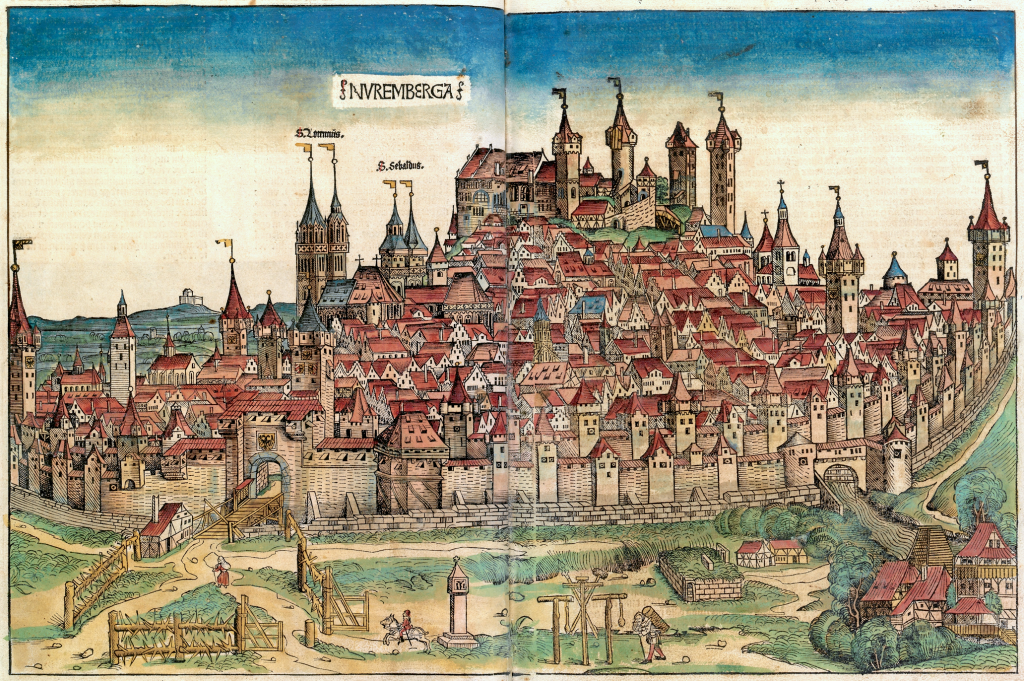Father Charles Brandt was asked to restore special collections from Universities across Canada and the United States. These include Simon Fraser University, the University of Victoria, The New Brunswick Law Library, the University of Calgary, Stanford University, Washington State University to name a few. Art Gallery’s and Museums across North America also sent artwork, documents and books to Charles Brandt’s hermitage for restoration.
The following is a link to the Nuremberg Chronicle and a photo of one of its pages.
https://www.themorgan.org/exhibitions/online/imperial-splendor/nuremberg-chronicle

For more information about the Nuremberg Chronicle see following link: https://en.wikipedia.org/wiki/Nuremberg_Chronicle
The Nuremberg Chronicle By SHARI CUMMINS Courier-Islander Reporter
Believe it or not, the paper made 500 years ago was probably better quality than what is made today.
These days books and the paper they are made from are often taken for granted, thanks to an abundance of cheap paper made from wood pulp, instead of rag (usually cotton or flax) the way it once was.
But 500 years ago paper, and especially books, were rare and treasured possessions. Oyster River book conservator and Roman Catholic priest Father Charles Brandt is aware of the value of both of those
items. He has been restoring fragile books, prints and documents for many years for agencies like the
National Museum. He recently finished repairing one of the first world history books, printed in 1493.
The Nuremberg Chronicle is a 355 page account of the world beginning with the Garden of Eden and ending with the modern, now medieval, world. It is named after the city where it was written by Hartmann
Schedel.
The first printing press wasn’t invented until the early 1400’s, making the Chronicle one of the major books ever printed using moveable type instead of a pen. Before the printing press was invented each book was hand-copied.
The Chronicle is written in latin, and over 650 woodcuts were used to illustrate its pages. The woodcuts include some of the first printed maps of the world, and a picture of medieval Nuremberg which includes the first paper mill in Germany.
The book does not look 500 years old. The vellum, a type of animal skin used for book covers, is only slightly discolored, and the pages are still pale and flexible. Compared to modern pulp paper, which can discolor in hours and becomes brittle and discolored after a few years, the paper used in ancient books
is far superior quality.
The book’s owner, the University of Alberta, commissioned Brandt to restore the cracked covers and water damaged pages. He painstakingly repaired the vellum cover and “patched” the water damaged pages using wheat flour starch and Japanese paper.
The book, treasured by its owners, is worth over $65,000, and is kept in an archive where the humidity, temperature and light are carefully controlled to ensure its preservation.
Looking at the well-preserved book appears to prove a belief held by many artists, who soy that the only paper worth using is costly rag paper (made from cotton or flax instead of wood pulp), because of its quality and longevity.
Although we may not want to create copies of trashy paperbacks and government reports that can last unblemished for 1,000 years, high quality paper can be used again to print books and documents with a very long life span. But the beleaguered pulp paper industry does not need to fear losing business to paper making operations using rag, such as cotton and linen, to make high grade paper.
Brandt said that a similar kind of high-quality and enduring paper like that in the Nuremberg Chronicle can be made from wood pulp. An acid product in the pulp, which causes it to break down so quickly, can be removed, he said. Brandt added that if excessive bleaching is also avoided the pulp paper could be of
equal quality to the far more expensive rag paper.
